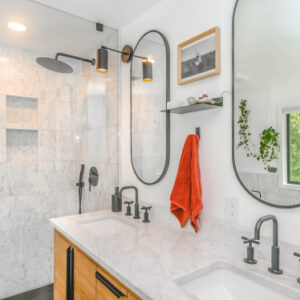Drywall repair is a common task for homeowners in Seattle, where weather changes and everyday wear can take a toll on Drywall repair Seattle. Whether you’re dealing with minor dents or larger holes, knowing how to repair drywall effectively can maintain your home’s aesthetics and structural integrity. Follow this step-by-step guide to tackle drywall repairs with confidence.
Assess the Damage
- Inspect the Area: Begin by examining the damaged area closely. Determine the size and type of damage (e.g., small hole, large hole, crack) to prepare for the appropriate repair method.
- Clear the Area: Remove any loose debris or old drywall compound surrounding the damaged spot. Use a utility knife to create a clean, smooth edge around the damaged area to facilitate a neat repair.
Gather Materials
- Spackling Compound: For filling small holes and cracks.
- Drywall Joint Compound: For larger repairs and smoothing over surfaces.
- Putty Knife: Essential for applying compounds and smoothing surfaces.
- Sandpaper (fine grit): To smooth rough edges and blend repaired areas seamlessly into the existing wall.
- Primer and Paint: Match these to your existing wall color and finish to complete the repair.
Prepare for Repair
- Apply Spackling Compound: For small holes, apply spackling compound with a putty knife. Press the compound firmly into the hole and ensure it’s slightly raised above the surface of the wall to account for shrinkage.
- Use Drywall Joint Compound: For larger holes or cracks, apply drywall joint compound with a wider putty knife. Spread the compound smoothly and evenly, feathering the edges outward to blend with the surrounding wall.
- Allow for Drying: Let the compound dry completely according to the manufacturer’s instructions. This typically takes a few hours or overnight, depending on the humidity levels and temperature in your home.
Sand and Finish
- Sand the Repair: Once the compound is dry, gently sand the repaired area with fine-grit sandpaper. Smooth out any rough edges or uneven surfaces to achieve a seamless finish. Be careful not to oversand, which can damage the surrounding wall texture.
Prime and Paint
- Apply Primer: Before painting, apply a coat of primer to the repaired area. Primer helps the paint adhere evenly and prevents differences in sheen between the repaired spot and the rest of the wall.
- Paint Matching: Once the primer is dry, paint the repaired area to match the existing wall color and finish. Use the same type of paint (e.g., satin, eggshell) to ensure a consistent appearance.
Final Touches
- Inspect and Touch Up: After the paint has dried, inspect the repaired area in natural light to ensure the repair blends seamlessly with the surrounding wall. Touch up any imperfections or inconsistencies as needed.
Conclusion
Mastering drywall repair in Seattle involves understanding the unique challenges posed by the city’s climate and environmental conditions. By following this step-by-step guide, you can confidently tackle drywall repairs of various sizes and complexities. Regular maintenance and prompt repairs ensure your walls remain not only functional but also aesthetically pleasing for years to come. With practice, you’ll develop the skills needed to handle any unexpected damage efficiently, keeping your home in top condition.


